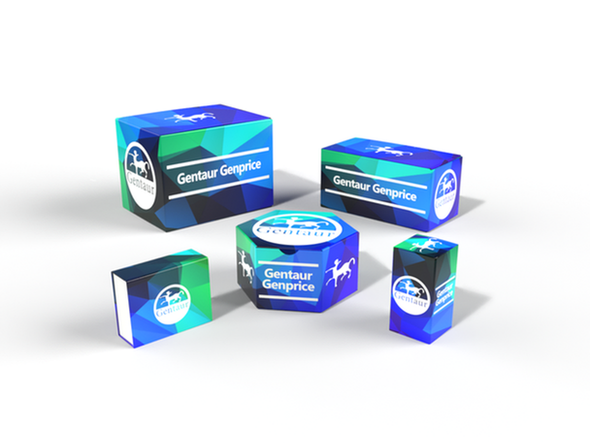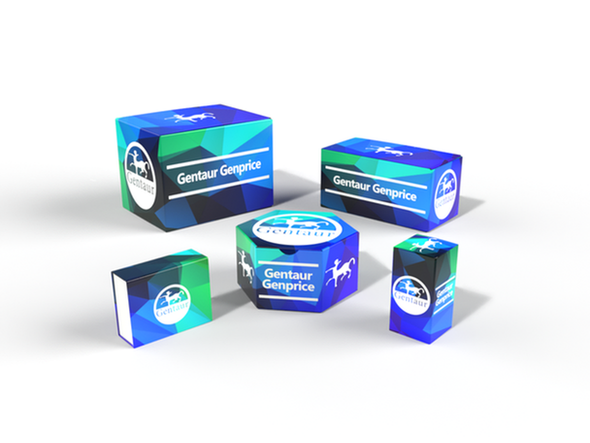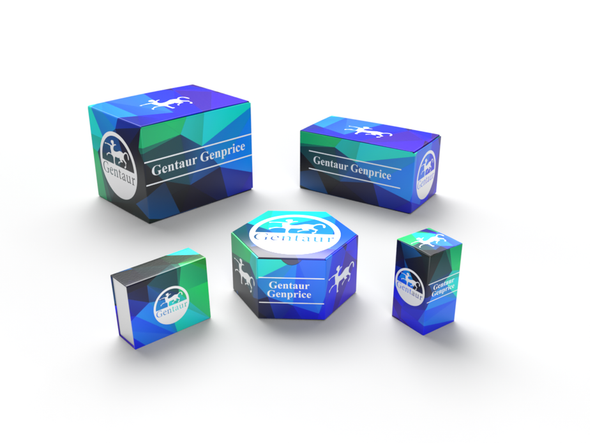749
Mouse Adrenomedullin (ADM) ELISA Kit | KTE70559
- SKU:
- 749-KTE70559
- Availability:
- Usually ships in 5 working days
Description
Mouse Adrenomedullin (ADM) ELISA Kit | KTE70559 | Gentaur UK, US & Europe Distribution
Application: This Mouse Adrenomedullin (ADM) ELISA Kit employs a two-site sandwich ELISA to quantitate ADM in samples. An antibody specific for ADM has been pre-coated onto a microplate. Standards and samples are pipetted into the wells and anyADM present is bound by the immobilized antibody. After removing any unbound substances, a biotin-conjugated antibody specific for ADM is added to the wells. After washing, Streptavidin conjugated Horseradish Peroxidase (HRP) is added to the wells. Following a wash to remove any unbound avidin-enzyme reagent, a substrate solution is added to the wells and color develops in proportion to the amount of ADM bound in the initial step. The color development is stopped and the intensity of the color is measured.
Detection Method: Colorimetric
Conjugate: N/A
Sample Type: Cell culture supernatants#Serum#Plasma#Other biological fluids
Assay Type: Multiple steps standard sandwich ELISA assay with a working time of 3-5 hours. It depends on the experience of the operation person.
Kit Component: • Mouse Adrenomedullin microplate
• Mouse Adrenomedullin standard
• Mouse Adrenomedullin detect antibody
• Streptavidin-HRP
• Standard diluent
• Assay buffer
• HRP substrate
• Stop solution
• Wash buffer
• Plate covers
Features & Benefits: Mouse Adrenomedullin (ADM) ELISA Kit has high sensitivity and excellent specificity for detection of Mouse ADM. No significant cross-reactivity or interference between Mouse ADM and analogues was observed.
Calibration Range: Please inquire
Limit Of Detection: Please inquire
Usage Note: • Do not mix components from different kit lots or use reagents beyond the kit expiration date.
• Allow all reagents to warm to room temperature for at least 30 minutes before opening.
• Pre-rinse the pipet tip with reagent, use fresh pipet tips for each sample, standard and reagent to avoid contamination.
• Unused wells must be kept desiccated at 4 °C in the sealed bag provided.
• Mix Thoroughly is very important for the result. It is recommended using low frequency oscillator or slight hand shaking every 10 minutes.
• It is recommended that all samples and standards be assayed in duplicate or triplicate.
Storage Instruction: The unopened kit should be stored at 2 - 8°C. After opening, please store refer to protocols.
Shipping: Gel pack with blue ice.
Precaution The product listed herein is for research use only and is not intended for use in human or clinical diagnosis. Suggested applications of our products are not recommendations to use our products in violation of any patent or as a license. We cannot be responsible for patent infringements or other violations that may occur with the use of this product.
Background: Adrenomedullin (ADM) is a peptide associated with pheochromocytoma. Adrenomedullin (AM) is a ubiquitously expressed peptide initially isolated from phaechromyctoma. Adrenomedullin, a hypotensive peptide found in human pheochromocytoma, consists of 52 amino acids, has 1 intramolecular disulfide bond, and shows a slight homology with the calcitonin gene-related peptide. It may function as a hormone in circulation control because it is found in blood in a considerable concentration. The precursor, called preproadrenomedullin, is 185 amino acids long. By RNA-blot analysis, human adrenomedullin mRNA was found to be highly expressed in several tissues. The human AM gene is localized to a single locus on Chromosome 11 with 4 exons and 3 introns.
Alternative Names: ADM; AM; preproadrenomedullin
Search name: ADM; AM; preproadrenomedullin
Tag: ADM










